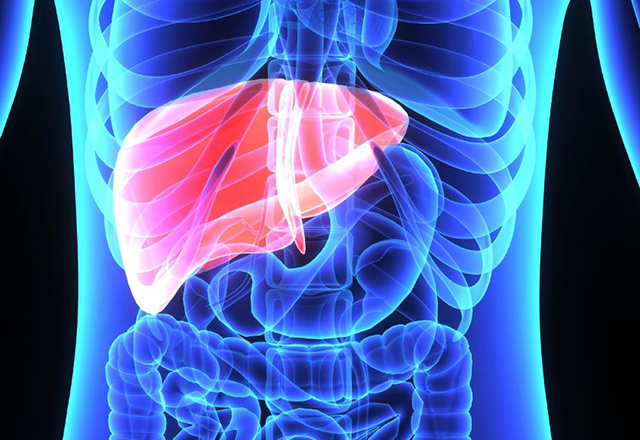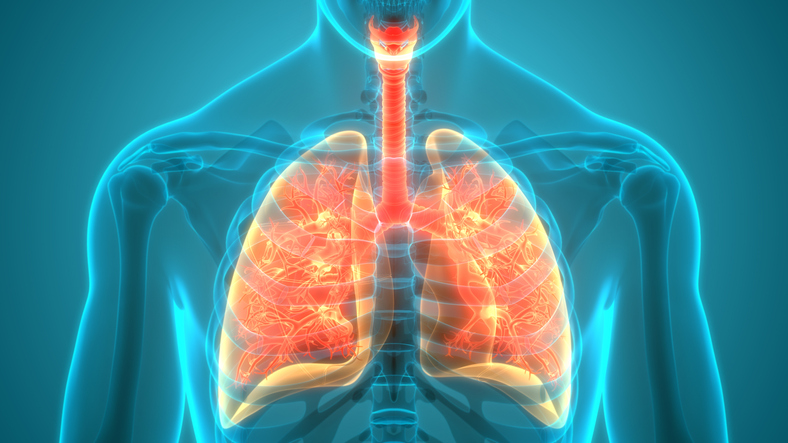Logan was diagnosed with a rare genetic mutation that causes bile to build up in the liver. Logan’s parents didn’t want to wait any longer in Florida for a transplant. So they checked out a pediatric liver transplant program in Pittsburgh at UPMC Children’s Hospital. Watch this story on WTAE-TV Pittsburgh.
Tacrolimus After Lung Transplant Cuts Chronic Lung Allograft Dysfunction
— Calcineurin inhibitor significantly reduced CLAD rates in Scandinavian trial
By Elizabeth Short
MILAN — Once-a-day tacrolimus significantly reduced chronic lung allograft dysfunction (CLAD) in lung transplant patients compared with the standard immunosuppressant, according to the ScanCLAD trial.
Among patients who underwent double lung transplantation, CLAD occurred significantly more often among those who received cyclosporine (cumulative incidence 39%, 95% CI 31-48) versus those who got tacrolimus (13%, 95% CI 8-21, P<0.0001) at 36 months post-procedure, reported Göran Dellgren, MD, PhD, of the University of Gothenburg, in Sweden, at the European Respiratory Societyopens in a new tab or window meeting. Read the article in MedPage Today.
UCLA research suggests that heart transplantation is safer for adults with single-ventricle CHD than previously thought
By Enrique Rivero
FINDINGS
UCLA-led research finds that among adult congenital heart disease (CHD) transplant recipients, single-ventricle physiology correlated with higher short-term mortality. But 10-year conditional survival was similar for biventricular and most single-ventricle CHD patients, and notably better for biventricular CHD patients compared to non-CHD heart transplant recipients. Read more from UCLA Health.
Heart recipient meets donor family for first time
By Zulekha Nathoo
A 23-year-old woman in Akron, Ohio, was moved to tears after meeting the family of someone who saved her life.
“Just absolutely amazing and breathtaking, emotional, but also gratifying,” said heart transplant recipient Katherine Herrmann.
Herrmann had undergone 20 surgeries and procedures on her heart before even reaching the age of 20. When she suffered heart failure while still in college, her doctors told her a transplant was the only option to keep her alive. Read the full story in USA Today.
Care, outcomes remain uneven amid growing atrial fibrillation burden in US
By Regina Schaffer
By Larry R. Jackson II, MD, MHSc
Atrial fibrillation affects 2.7 million to 6.1 million people in the U.S., according to the American Heart Association, and that burden is expected to rise substantially in the coming years.
With AF comes risk for other CV conditions, including a fivefold elevated risk for stroke compared with the general population, yet many people remain undiagnosed and some people are at much higher risk for AF than others. Read the full story in Healio.
See emotional moment after woman who received heart transplant meets donor’s father
Organ donors are some of the most selfless people in the world, so it’s always emotional when someone who received an organ from a donor can meet their family.
That’s what happened when 22-year-old Katherine Herrmann met the family of an organ donor who gave her a new heart. Hermann received her new heart last summer, after having a lifetime of heart problems and 20 surgeries, according to the Cleveland Clinic. Check out the story on Click 2 Houston.com.
FDA approves updated COVID-19 vaccines
By Stephen Feller
The FDA on Monday approved and authorized updated COVID-19 vaccines from Moderna and Pfizer-BioNTech that target omicron XBB subvariants of SARS-CoV-2.
The agency fully approved the monovalent messenger RNA vaccines for people aged 12 years or older and authorized them for emergency use among people aged 6 months to 11 years. Read more in Healio.
HCV Infection, Once a Hurdle to Heart Transplantation, Is Now Manageable
By Peter Wehrwein, Managing Editor
The advent of the direct-acting antivirals, such as Harvoni (ledipasvir and sofosbuvir) means people can be treated for HCV infection if they receive a heart from an HCV-viremic donor, according to a recent review paper. The supply of hearts available for transplantation has increased, partly because HCV-viremic individuals are now part of the donor pool.
Transplanting organs, including hearts, from people infected with hepatitis C virus (HCV) used to be avoided because of the risk of infection and studies showing that the recipients had worse outcomes,
Marina Nunez, M.D., Ph.D., of Wake Forest School of Medicine, co-wrote a review paper exploring the hepatitis C infection and heart transplantation.
But when the direct-acting antivirals against hepatitis C started to come on the market, particularly Harvoni (ledipasvir and sofosbuvir) in 2014, the views and practices changed. Read more in Managed Healthcare Executive.
Winter weather ups risk for poor blood pressure control
By Regina Schaffer
People with hypertension are more likely to have higher systolic BP and slightly worse BP control during winter vs. summer months, researchers reported at the American Heart Association Hypertension Scientific Sessions.
“Seasonal variation in blood pressure has a substantial effect on hypertension control, often defined as a BP of less than 140/90 mm Hg,” Robert Barrett, a software engineer with the AMA, told Healio. “Patients with hypertension are less likely to have their BP controlled during winter than summer months.” Read more in Healio.
To save a young mom, Seattle transplant doctors became pioneers
By Elise Takahama
It had been less than two weeks since giving birth when a coronary artery in Adriana Rodriguez’s heart burst.
The sudden tear interrupted an early December breakfast with her mother in Bellingham, and within minutes her chest started tightening. A wave of nausea weakened her body. She wanted to curl up into a ball.
Read the full story in The Seattle Times.







